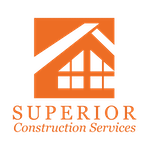Approaches to Renovating a Historic Home
I often get inquiries from clients about renovating or remodeling a historic home in the Washington metro area. I really love these kinds of projects. They require a special kind of creativity to balance modernization and lifestyle improvements while retaining the home’s historic character.
However, there’s no denying that renovating a historic home can be a challenge. My clients often don’t know where to start planning such a project. And there is any number of decisions you need to make. Should you update the wiring? Keep the original windows? Knock down walls?
Everything is complicated by the fact that any historic home had probably already been through a couple of renovations. You’re not only dealing with the original elements of the house but also changes that were made decades ago — which might not always mesh with the home’s character.
Getting Started with Renovating a Historic House
My philosophy is to stay true to the home’s original design intent — and there are many ways to do that. It may mean retaining the original floor plan, ensuring that updated elements are unobtrusive, or making sure that new design elements fit the original aesthetic.
1. Do Your Research.
The home’s time period and design help establish its character. I always like to start by learning about the architecture of the time period and that home’s particular history. This helps clients understand how the house came to have its current shape and often gives us ideas for unique and creative remodeling elements.
2. Don’t Be Afraid of Major Changes.
I often encounter homeowners who are reluctant to knock down walls, but today’s lifestyle often calls for a more open floor plan. Kitchens, in particular, tend to be small in older homes and bathrooms are scarce. Enlarging and renovating the kitchen, increasing the number of bathrooms, or adding square footage will improve your home’s resale value.
3. Blend The Old and The New.
One of my clients’ most common concerns is losing their home’s charm and uniqueness to a sterile, cookie-cutter renovation. Fortunately, many vendors today offer modern versions of old-fashioned lights, bathroom fixtures, and other design elements. You don’t want to get too hung up on making everything look old; you need a microwave after all.
On the other hand, you don’t want renovated elements to be glaringly new in an old house. If the floors look a little worn, for example, that is completely in keeping with an older house’s aesthetics. The key is to blend the new with the old to give the house a timeless feeling.
What Can I Preserve in a Historic House Renovation?
One of the first questions I ask clients is which features of the house give it character. Perhaps it has a gorgeous fireplace or a grand staircase in the front hall or a distinctive dining room chandelier. You should know which elements you want to preserve and restore — and even highlight in the new design.
Original Floors
Depending on the condition of your hardwood floors, it might be cheaper to restore them than to replace them. Retro flooring like checkered vinyl or funky tile might also be worth restoring to maintain the home’s character.
Trim and Woodwork
Trim and molding often give older homes their vintage appeal, but original woodwork might be hidden under layers of paint and stain. If your home still has original trim, molding, and baseboards, you can sand and refinish them to give a fresh but old-fashioned aesthetic.
Don’t Hurry to Replace Windows
Yes, old windows can be inefficient, but my clients often find that replacing them doesn’t save that much money. And new vinyl windows could look completely wrong with your architecture. Investigate whether you can restore the existing windows to make them more functional and energy efficient. It’s completely possible to preserve and weatherize old, wooden double-hung windows — and likely cheaper than wholesale replacement. Well-maintained wooden frame windows can last a long time.
Upgrading Historic House Infrastructure
None of my clients express a lot of excitement about the plumbing in their remodeling project. But, before you plan any major renovations, you need to check out the home’s structural elements. Otherwise, you might be in for some nasty surprises during construction.
Start at the Top (and Bottom)
Make sure the roof isn’t leaking and determine when it will need to be replaced; this is one part of the house that won’t remain original. You also need to inspect the foundation to make sure it’s solid. It might not be level, but as long as it isn’t continuing to settle, you don’t need to worry. Check the masonry and see if walls or chimneys need repointing.
Plumbing
Sometimes the original plumbing might be in good shape, but you still want to check for leaks. In addition, galvanized steel or lead pipes will need to be replaced. Similarly, some of the bathroom fixtures may be outdated or worn.
HVAC
If the home’s heating and air conditioning systems haven’t been updated in a while, you should consider replacing them. The new equipment will be more energy efficient and will probably make your house more comfortable. And air conditioners typically need to be replaced if they are more than ten years old.
Electrical System
This is one area that you’re almost guaranteed to need to change during a renovation. Rewiring ensures that your home is up to the demands of today’s electrical loads and reduces the risk of fire. Rewiring as part of a remodeling project will save you money since it’s easier to do while the walls are open. Local regulations often require updating the electrical system when you’re renovating.
Planning a historic home renovation in the Washington metro area? Contact Danny Steinkoler and the experts at Superior Construction for an estimate.
